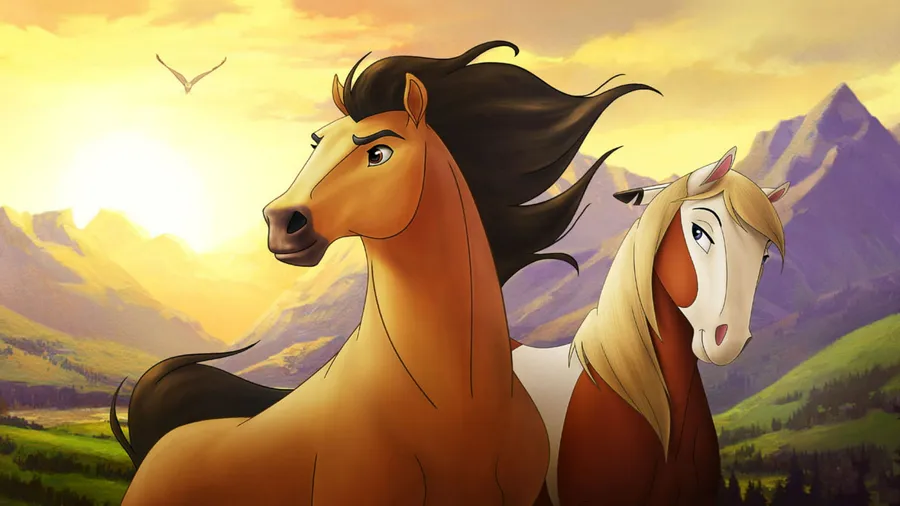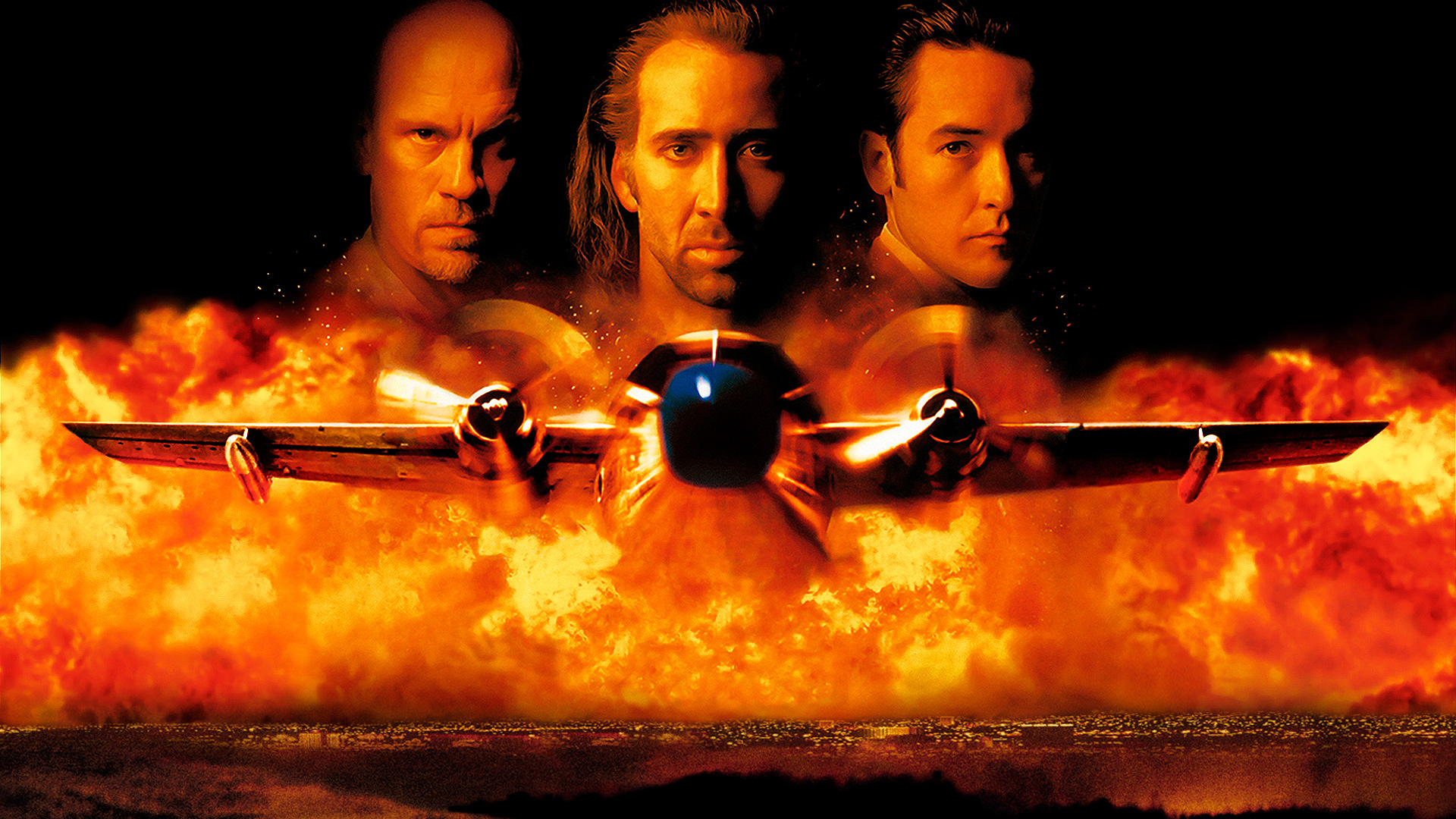Surprisingly, for all its painterly qualities, Spirit: Stallion of the Cimarron is DreamWorks most technologically complex animated film of any kind to date.
“The thing that is unique to traditional animation is what happens when an artist, an animator, gives life to a character with his or her own hand,” producer Jeffrey Katzenberg offers. “It’s a direct creation of life with a pencil on a piece of paper. Computers can't do that… not yet.” But, Katzenberg adds, “The computer is not the nemesis of traditional animation. What I wanted to do with this film was to take hand-drawn animation and marry it together with state of the art technology to create a film that is the best of both worlds.”
Spirit: Stallion of the Cimarron is by no means the first traditionally animated film to incorporate computer-animated elements. However, this movie represents such a wholesale commingling of these two techniques, that some of the production team have referred to it as a hybrid form of animation. The primary example of this hybrid comes early on in the film, as we see the adult Spirit running with his herd. As they run, we are watching 3D animation not only of the herd, but also of Spirit himself. As Spirit comes up to the crest of a hill, the camera zooms in to circle around him, and we witness, but don’t see, an absolutely imperceptible 2D takeover of the shot. Then, as the camera moves back, there is another takeover, this time 3D, that is equally seamless.
The entire animation team began an intensive crash course on equine anatomy, movement, locomotion and behavior. At the Los Angeles Equestrian Center, the animators spent hours studying and sketching real horses. The animators also benefited enormously from the expertise of two of the horse world’s most respected authorities and the film’s horse consultants, Dr. Deb Bennett and Dr. Stuart Sumida.
The doctors engaged the animators in a multi-pronged training program, teaching them about horses from the inside out. Aside from the fact that horses have that long, rigid spine, other parts of their anatomy are almost always moving, from the long neck that bends and swings and the tail that flicks and swishes, to the ears that pivot to capture sound and the lips that serve as their “hands”.
The animation team was further educated about the varying gaits of a horse - walk, trot, canter and full gallop. More than just the speed, animators had to learn the individual components of each gait and the emotions behind them. For example, the frolicking gallop of a horse at play is entirely different from a gallop instigated by fear.
Glacier National Park became the model for Spirit’s homeland, with its magnificent landscape of lush green grass, open blue skies and rolling hills and valleys. In sharp contrast, the Cavalry fort was a re-creation of Monument Valley where the terrain is stark and more angular.
Aspects of both Yosemite National Park and Yellowstone National Park are seen in the Lakota village where Spirit meets his love Rain. Bryce Canyon, with its unique rock formations towering above narrow, winding trails, provides the perfect backdrop for the heart-stopping chase scene. To do the panoramic vistas of the American West justice on the screen, the filmmakers felt their only choice was to shoot Spirit: Stallion of the Cimarron in the wide-screen format Cinemascope. For the animation team, the decision meant they would be required to produce 40 percent more animation to fill the larger frames. At 24 frames per second, this translated to a great deal of work for both the traditional animators and the digital artists.
Whether 2D or 3D, horses are notoriously difficult to draw and even more so to animate, which speaks to why Spirit: Stallion of the Cimarron is the first animated film to feature a horse as its central character.
There are several elements that have kept horses off the drawing boards of animators. They have a long, inflexible spine, a defined musculature seen in every movement and a wide range of gaits. Their faces also pose another kind of challenge, characterized by an elongated muzzle, with the eyes set high and wide and the mouth set low.
The entire animation team began an intensive crash course on equine anatomy, movement, locomotion and behavior. At the Los Angeles Equestrian Center, the animators spent hours studying and sketching real horses. The animators also benefited enormously from the expertise of two of the horse world’s most respected authorities and the film’s horse consultants, Dr. Deb Bennett and Dr. Stuart Sumida.
The doctors engaged the animators in a multi-pronged training program, teaching them about horses from the inside out. Aside from the fact that horses have that long, rigid spine, other parts of their anatomy are almost always moving, from the long neck that bends and swings and the tail that flicks and swishes, to the ears that pivot to capture sound and the lips that serve as their “hands”.
The animation team was further educated about the varying gaits of a horse - walk, trot, canter and full gallop. More than just the speed, animators had to learn the individual components of each gait and the emotions behind them. For example, the frolicking gallop of a horse at play is entirely different from a gallop instigated by fear.
One special character in Spirit: Stallion of the Cimarron is neither horse nor human. It is the landscape of the American West itself, at a time when the frontier was as untamed as the wild mustangs that called it home.
The progress of civilization has forever changed much of the landscape, so production designer Kathy Altieri, art directors Ron Lukas and Luc Desmarchelier and the filmmakers began their research in books about the Old West. They also watched old movie Westerns and studied the paintings of the great Western artists, like Frederic Remington, Frank Tenney Johnson and James Reynolds.
But no painting, movie or photograph could be as inspirational to the filmmakers and design team as seeing firsthand the still-breathtaking vistas of the West. So eight members of the production team embarked on a whirlwind tour of eight of America’s most treasured national parks in only four days.
Glacier National Park became the model for Spirit’s homeland, with its magnificent landscape of lush green grass, open blue skies and rolling hills and valleys. In sharp contrast, the Cavalry fort was a re-creation of Monument Valley where the terrain is stark and more angular.
Aspects of both Yosemite National Park and Yellowstone National Park are seen in the Lakota village where Spirit meets his love Rain. Bryce Canyon, with its unique rock formations towering above narrow, winding trails, provides the perfect backdrop for the heart-stopping chase scene. To do the panoramic vistas of the American West justice on the screen, the filmmakers felt their only choice was to shoot Spirit: Stallion of the Cimarron in the wide-screen format Cinemascope. For the animation team, the decision meant they would be required to produce 40 percent more animation to fill the larger frames. At 24 frames per second, this translated to a great deal of work for both the traditional animators and the digital artists.
At the start of the film, the audience is carried into the world of Spirit on the wings of an eagle in what the production team dubbed the “homeland pan.” The shot is a three-minute camera fly through capturing some of the most recognizable landmarks of the American West, in what appears to be one long, continuous pan. Actually comprised of seven separate parts, the sequence features a perfect blending of hand drawn-characters and traditionally painted backdrops with digital environments and CG characters.
More than nine months in just the design stage, the homeland pan was one of the first sequences to go into production and one of the last to be finished. Achieving the exceedingly complex shot required literally tens of thousands of 2D and 3D elements, including more than 700 traditionally painted backgrounds and more than 2,500 drawings, another 1,800-plus painted elements that were then texture mapped onto 3D geometry to make the virtual sets and more than 12,000 frames of computer-generated elements. There were an average of 30 layers composited to produce any given frame, and the fly through involved 4,183 final film frames.


No comments:
Post a Comment